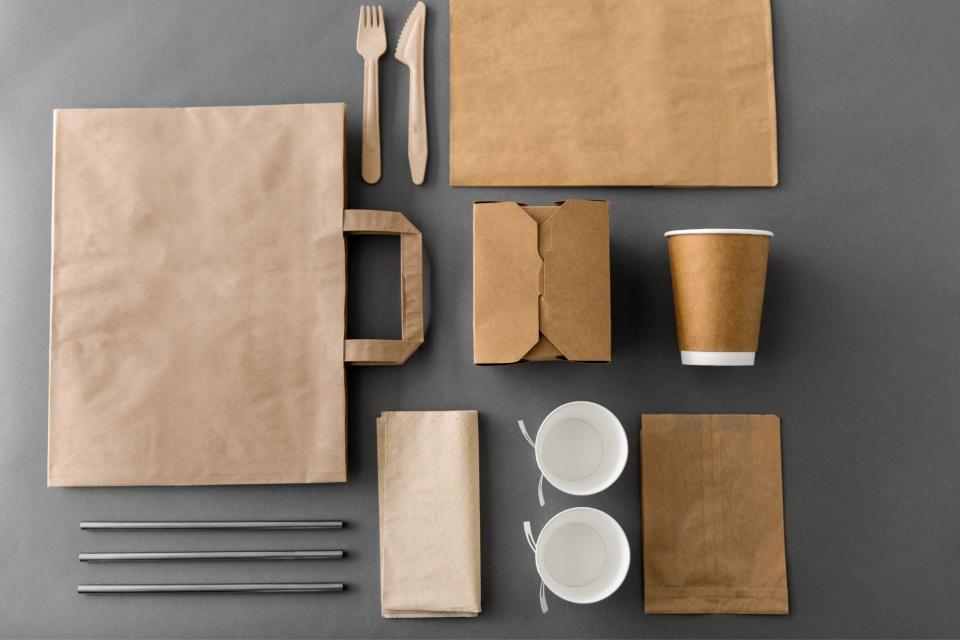Sustainable Package Practices: How Much Does It Really Cost For Hawkers (And You) To Go Green?

For many Singaporeans used to taking away hawker meals, paying the extra charge of 20 to 30 cents is worth the convenience of bringing home a hot meal to eat in the comfort of home. However, Sembawang residents visiting the new Bukit Canberra Hawker Centre were shocked by takeaway charges ranging from 50 cents to 80 cents, due to the more expensive biodegradable takeaway containers.
While most Singaporeans are supportive of being more environmentally friendly, we tend to be cost-sensitive as well. So, how much does it really cost for hawkers and us to go green when it comes to our takeaway meals?
Read Also: Guide To Start A Hawker Stall Business In Singapore
Disposables Contribute 200,000 Tonnes Of Domestic Waste
As Singapore moves towards Green Plan 2030, NEA is encouraging Singaporeans to reduce our use of disposables. One way is to encourage businesses (including hawkers) to reduce the use of disposables or to switch to more sustainable alternatives.
This is not only a greener move but also a necessity as our only landfill, Semakau Landfill will be fully filled by 2035 if Singapore continues to create waste at our current rate. In 2020, about 200,000 tonnes of domestic waste (or the equivalent of 400 Olympic-size swimming pools or 4,000 4-room HDB flats) were disposables. This included carrier bags, food and beverage containers, and tableware and utensils.
To reduce the use of takeaway containers, NEA disallows using disposables for dine-in meals at all new hawker centres, and at existing hawker centres which have adopted the use of common crockery and centralised dishwashing services under the Productive Hawker Centres programme. New cooked food stallholders at existing hawker centres are also not allowed to provide disposables to patrons for dine-in meals.
Hawkers Pay For Dishwashing Service and S&CC Even If You Takeaway
Ideally, it is greener for us to dine in at the hawker centre to reduce the use of disposable takeaway containers or to bring our own takeaway containers.
Even if we choose not to dine in the hawker centre, hawkers still must pay fixed costs including dishwashing service and S&CC fees. According to a parliamentary reply in 2019, S&CC fees can range from $110 to $350 a month at social enterprise hawker centres and $130 to $450 at government-run hawker centres. Table cleaning fees range from $300 to $550 at social enterprise hawker centres and $200 to $830 a month at government-run hawker centres. According to Straits Times, cleaning fees at Our Tampines Hub social enterprise hawker centre were about $700 per month.
For hawkers, takeaways cost more as not only do they have to provide the takeaway containers (an additional expense), but they are also not maximising the utilisation of the cleaning services they are already paying for.
Read Also: [2023 Edition] Price Guide To Hawker Stall Rentals In Singapore
Environmentally-Friendly Disposables Can Be More Expensive
For the case of Bukit Canberra Hawker Centre, the increase in takeaway charges was because of the more expensive biodegradable takeaway container required by the hawker centre operator which costs 50 cents each.
While different hawker centre operators have their individual ways of management, NEA has set some guidelines in the form of the Packaging Partnership Programme and “Say YES to Waste Less” campaign.
Under the Packaging Partnership Programme (PPP), companies can learn about the Mandatory Packaging Reporting requirements as well as tap on technical experts for advice on sustainable waste management. Enterprise Singapore has also launched a technical reference on Sustainable Packaging Guiding Framework and Practices in partnership with the PPP. Hawker centre operators can take note from these guidelines to choose the most suitable type of takeaway containers that are designed for recyclability or disposal.
Under the “Say YES to Waste Less” campaign, hawker centres are encouraged to reduce waste by adopting best practices that include prompting customers to opt out of disposable cutlery for their orders, providing incentives to customers who bring their reusables, and buying ingredients and materials that uses less packaging.
One way for hawkers (and hawker centre operators) to reduce the cost of environmentally-friendly disposables is to source for vendors who offer bulk-buy programmes for takeaway packaging to keep costs low.
Paying For Disposables May Become A Norm
Hawkers are not the only ones affected by the shift away from disposables. Supermarkets will be mandated to charge a minimum of 5 cents per plastic bag from mid-2023 to reduce the use of disposable plastic bags.
As a start, this will apply to supermarket operators with an annual turnover of more than $100 million. Smaller operators may choose to do so at an optional basis. This is estimated to cover about two-thirds of all supermarkets in Singapore.
For Singaporeans, this shift to paying for our disposables (be it takeaway containers or plastic bags) may be a mindset change that is hard to swallow initially. After all, we are used to these items being free. However, it may be the change needed for us to be more mindful of our disposable usage.
For hawkers, charging for takeaway containers will continue. While customers may initially baulk at higher prices for sustainable packaging, bulk buying will reduce its cost and widespread use will normalise the use of sustainable packaging.
The post Sustainable Package Practices: How Much Does It Really Cost For Hawkers (And You) To Go Green? appeared first on DollarsAndSense Business.

 Yahoo Finance
Yahoo Finance 